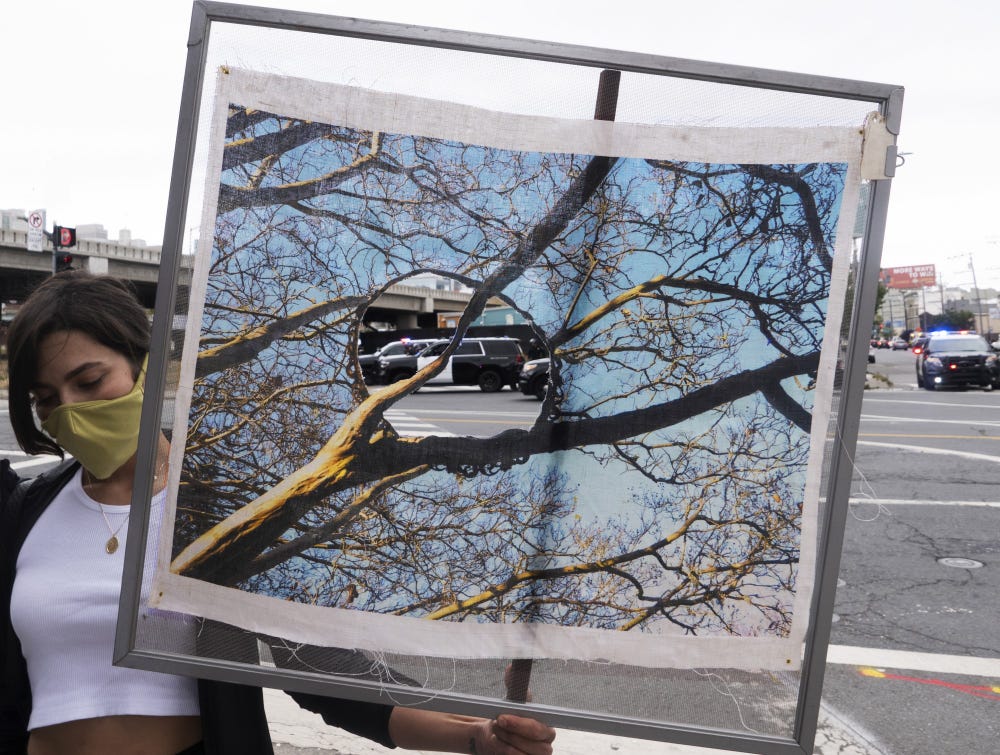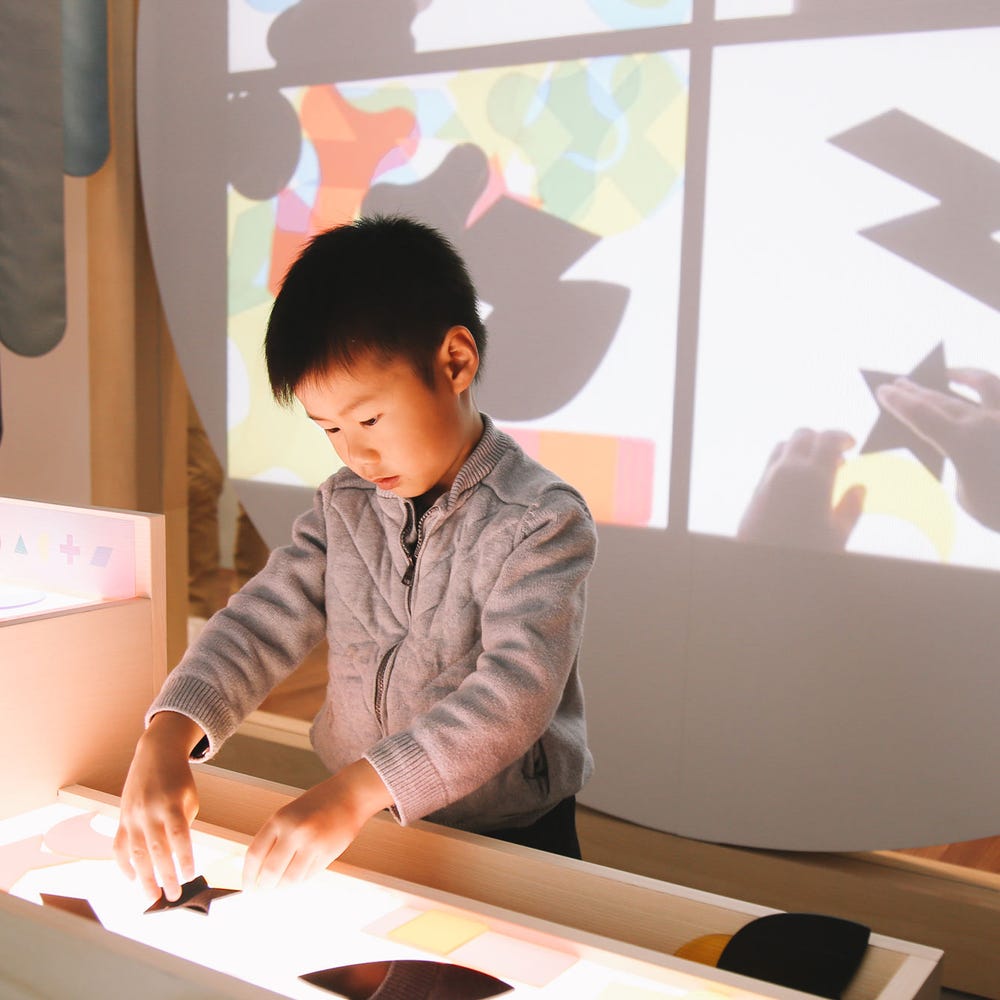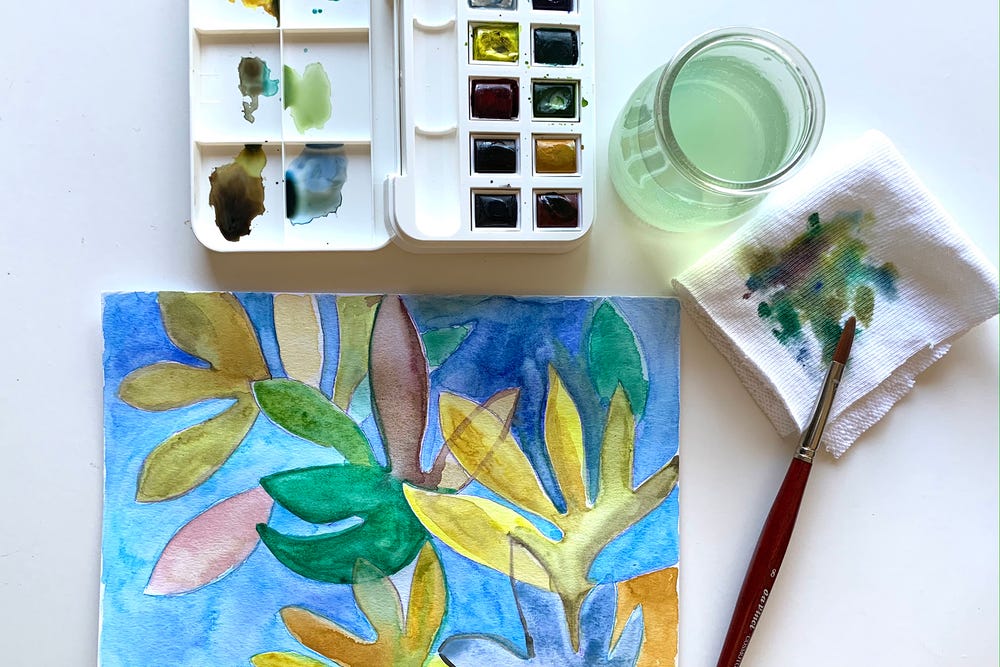de Youngsters Open Studio: A Scavenger Hunt of Bay Area Perspectives
By Hannah Waiters, artist
February 17, 2021
This art project explores the exclusion of ongoing “urban” narratives in history and our roles in reflecting our community experiences in 2021. In this work, we will learn how to make a viewfinder—a lens through which a perspective comes into focus—that brings visibility to neighborhoods that are restorative rather than depleting.
The de Young Open Connection
Hannah Waiters is a Bay Area–based conceptual artist, visual researcher, and educator. Her photograph Protest Sign—None Have Triumphed Without a Poet (2020), which was included in The de Young Open, was an improvisational viewfinder that documented a protest sign made from historical materials. The viewfinder reflected what it means to belong and to visualize Black social freedom and possibility despite conditions of erasure in the Bay Area.
Materials
- An image with a mirror or frame from a magazine, found photograph, or Polaroid photograph
- Pencil
- Construction paper or cardstock
- Pen or thin marker (optional)
- Colored pencils and markers
- Scissors
- Glue or tape
- Popsicle stick
Questions to Consider
- What are the tools that you use to see the world?
- What would you like the world to know about your community?
Steps
1. Find or capture an image of a mirror or frame from a magazine or a photograph that you would like to draw for the activity. (For example, my viewfinder will be in the form of a Polaroid photograph I took of my younger sister posing with our great-grandmother's mirror in hand.)
2. Sketch the image of your choice in pencil on construction paper or cardstock. When deciding on the size and orientation of your drawing, make sure it is big enough for you to cut a large hole into it for viewing.
3. Next, outline your drawing with a pen or thin marker. Pinpoint where you will cut the opening. (For instance, my drawing will have a hole cut where the mirror reflects.) Using scissors, carefully cut out the selected area to create your viewfinder.
4. Using colored pencils or markers, take your time adding details to the drawing. You can layer on color to add shape, depth, and texture. Note that you can add visuals to your drawing that were not originally in the picture to make it more creative if you like.
5. Before taking the viewfinder out on a scavenger hunt, you will need to create a handle to hold the viewfinder, making it easier to take photographs. To do this, put a few drops of glue on one side of a Popsicle stick and place it on the backside of your drawing, below the opening, so that it is easy to hold up. You can also use tape to secure it. If using glue, allow at least 30 minutes up to an hour for the stick to become secured to your viewfinder before using it.
6. Next, it’s time for the scavenger hunt! Accompanied by an adult, find the following places in your neighborhood:
- Flowers on a walk
- Your favorite local family-owned business
- A local body of water
- A Little Free Library nearest to you
- A place in your town that you want to learn more about
- Street art
Add to the list!
Reflect
After creating your viewfinder, consider the following questions:
- What did you learn about your neighborhood on your scavenger hunt?
- What was your favorite part of this process, and what would you change next time?
- What would you add to the scavenger hunt list?
Share
We would love to see what you create! Email pictures of your artwork to families@famsf.org or tag us on any social platform with #deyoungsters and #thedeyoungopen


